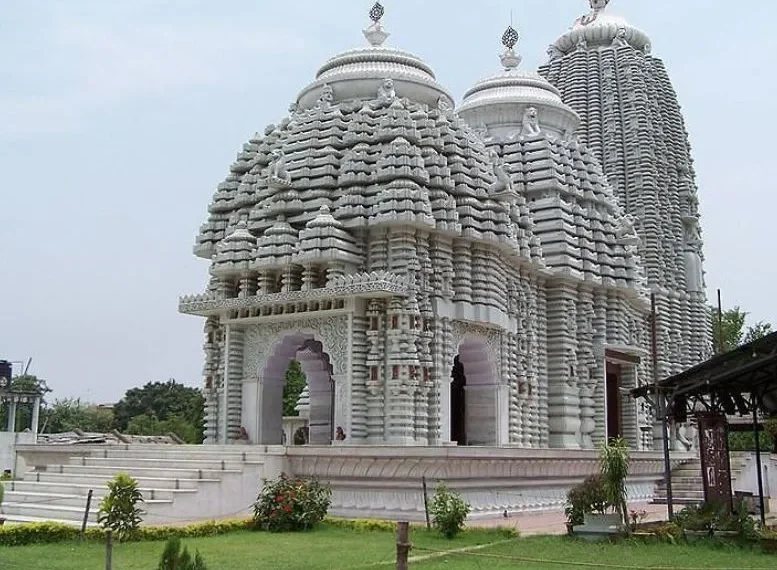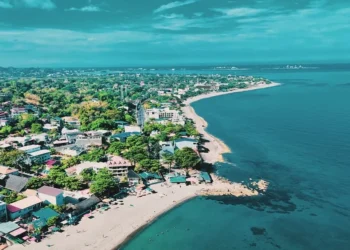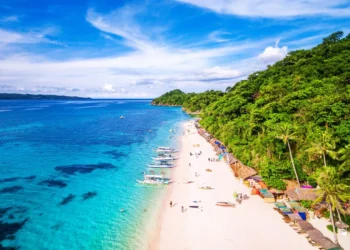India, called Deva Bhumi, land of gods, has many holy temples that show its deep faith and old ways. Jharkhand, in east India, holds green woods, tribal life, and sacred spots that call people to pray. The Jagannath Temple in Ranchi is one such place, dear to those who love Lord Jagannath. Ranchi, Jharkhand’s main city, sits calm among hills, known for historical and holy sites. Past its green hills and waters, this temple stands as a smaller version of Puri’s big shrine.
History of Jagannath Temple
The Jagannath Temple in Ranchi has old tales, full of faith. Built in 1691 by Thakur Ani Nath Shahdeo, king of Barkagarh Jagannathpur, it was done on December 25 that year. The king, touched by Puri’s Jagannath Temple in Odisha, wanted a holy place for his people. A tale says a poor man, hungry one night, prayed to Jagannath. The lord, in plain clothes, brought him food, showing care for those who trust. In 1691, Mughal king Aurangzeb’s men hurt the temple, but it stood strong. In 1990, rain broke part of it, but people fixed it by 1992, keeping its heart alive. The temple draws pilgrims, its past a light for their prayers, soft like dawn mist.
Legend
Legendary account as found in the Skanda-Purana, Brahma Purana and other Puranas and later Oriya works state that Lord Jagannath was originally worshipped as Lord Neela Madhaba by a Savar king (tribal chief) named Viswavasu. Having heard about the deity, King Indradyumna sent a Brahmin priest, Vidyapati to locate the deity, who was worshipped secretly in a dense forest by Viswavasu. Vidyapati tried his best but could not locate the place. But at last he managed to marry Viswavasu’s daughter Lalita. At repeated request of Vidyapti, Viswavasu took his son-in-law blind folded to a cave where Lord Neela Madhaba was worshipped.
Vidyapati was very intelligent. He dropped mustard seeds on the ground on the way. The seeds germinated after a few days, which enabled him to find out the cave later on. On hearing from him, King Indradyumna proceeded immediately to Odra desha (Odisha) on a pilgrimage to see and worship the Deity. But the deity had disappeared. The king was disappointed. The Deity was hidden in sand. The king was determined not to return without having a darshan of the deity and observed fast unto death at Mount Neela, Then a celestial voice cried ‘thou shalt see him.’ Afterwards the king performed a horse sacrifice and built a magnificent temple for Vishnu. SriNarasimha Murti brought by Narada was installed in the temple. During sleep, the king had a vision of Lord Jagannath. Also an astral voice directed him to receive the fragrant tree on the seashore and make idols out of it. Accordingly, the king got the image of Lord Jagannath, Balabhadra, Subhadra and Chakra Sudarshan made out of the wood of the divine tree and installed them in the temple.
King Indradyumna put up for Jagannath the tallest monument of the world. It was 1,000 cubits high. He invited Lord Brahma, the cosmic creator, consecrate the temple and the images.[12]
Brahma came all the way from Heaven for this purpose. Seeing the temple he was immensely pleased with him. Brahma asked Indradyumna as to in what way can he (Brahma) fulfill the king’s desire, since was very much pleased with him for his having put the most beautiful Temple for Lord Vishnu. With folded hands, Indradyumna said, “My Lord if you are really pleased with me, kindly bless me with one thing, and it is that I should be issueless and that I should be the last member of my family.” In case anybody left alive after him, he would only take pride as the owner of the temple and would not work for the society.
Architecture of Jagannath Temple
On a hill, the Jagannath Temple is simple but fine, made in Kalinga style, like Puri’s shrine. Its white walls, high and clean, show carved gods and stories, bright with colors that please eyes. The main shrine has wooden idols of Jagannath, Balabhadra, and Subhadra, their big eyes kind, not like stone gods in other places. A tall tower, called deula, rises up, with a holy wheel, Sudarshana Chakra, set by old hands, a wonder still. Small shrines for other gods sit in the yard, stones telling Krishna’s tales. The festival chariot, cut with care, shines bright, a sight to see. From the hill, Ranchi’s green hills and city spread out, a holy spot where hearts rest, pure and calm.
Visiting Information for Jagannath Temple, Ranchi
How to Reach Jagannath Temple, Ranchi
On a hill, 10 kilometers from Ranchi’s center, Jagannath Temple is reached by bus, taxi, own car. Its spot near Dhurwa keeps it close to city stays, holy places.
By Air
Ranchi’s Birsa Munda Airport, 15 kilometers off, links Delhi, Kolkata, Mumbai, Bangalore. Taxis from airport take half hour to temple, quick trip.
By Train
Ranchi Railway Station, 12 kilometers away, joins Kolkata, Delhi, Patna, Mumbai with trains like Ranchi-Howrah Express. Autos, taxis from station get to temple fast.
By Road
Ranchi ties Jamshedpur, Deoghar, Patna by state, private buses. Taxis, own cars make it simple. In Ranchi, rickshaws, car climb hill. About 100 steps lead up for walkers, rest spots along.
Nearby Attractions
Round Jagannath Temple, Ranchi has holy, calm spots. Pahari Mandir, 8 kilometers off, Shiva shrine on hill, city views, full peace. Rock Garden, 10 kilometers away, stone art by lake, quiet place. Dassam Falls, 40 kilometers far, spills water in green woods, rest spot. Tagore Hill, 12 kilometers out, honors poet Rabindranath Tagore, wide views, still air. Tribal Museum, 10 kilometers near, shows Jharkhand’s tribal life, old tools, tales, gift for those who seek.











